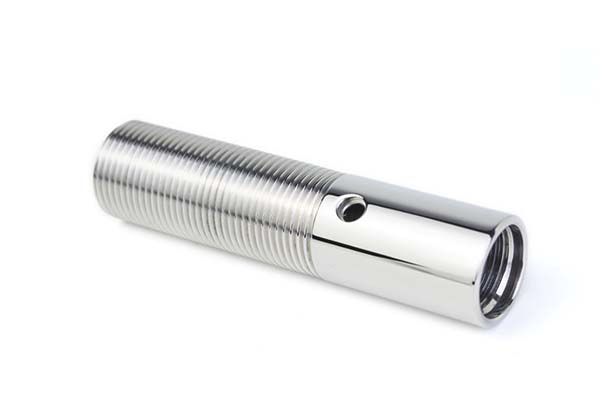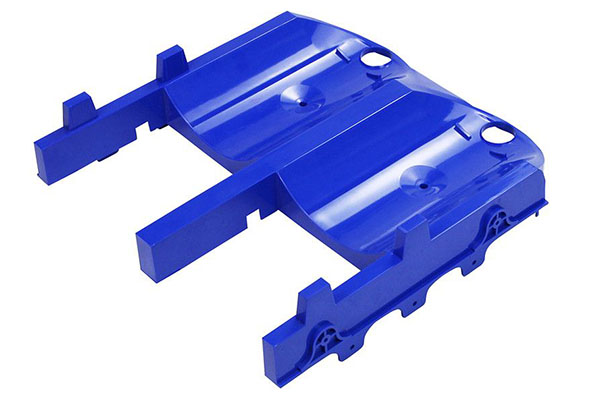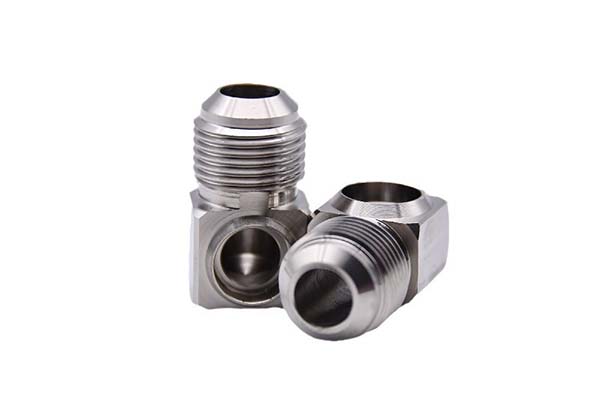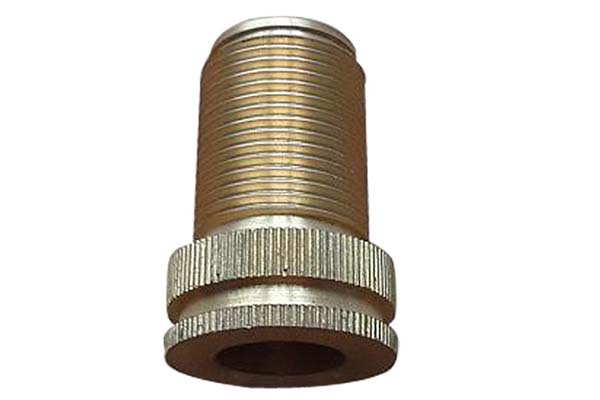If you’ve ever wondered how manufacturers produce complex aerospace parts in record time or achieve mirror-like finishes on mold components, the answer often lies in High Speed Machining (HSM). Unlike traditional machining, HSM isn’t just about “going fast”—it’s a precise, science-backed process that balances speed, tooling, and control to boost productivity and quality. Whether you’re a CNC operator looking to optimize your workflow, a shop owner considering upgrading equipment, or an engineer designing parts for high-performance industries, this guide will break down everything you need to know about HSM—from the basics to real-world problem-solving.
1. HSM Process Fundamentals: What Makes It Different from Traditional Machining?
Before diving into equipment or applications, let’s start with the core: what actually defines High Speed Machining? At its heart, HSM relies on a set of interrelated principles that work together to overcome the limitations of conventional methods. It’s not just about cranking up spindle speed—it’s about reducing cutting forces while maintaining (or increasing) material removal rates, which leads to better results across the board.
Key Principles of HSM
Let’s break down the critical components of the HSM process, with real-world context to make them tangible:
- High Spindle Speeds & High Feed Rates: Unlike traditional machining (where spindle speeds might top out at 10,000 RPM), HSM typically uses speeds between 15,000 and 60,000 RPM, paired with feed rates 2–5x faster. For example, a shop machining aluminum might run a traditional end mill at 8,000 RPM and 100 IPM (inches per minute), but with HSM, they could jump to 25,000 RPM and 350 IPM—cutting cycle time for a simple bracket from 12 minutes to 4 minutes.
- Light Depth of Cuts & Chip Thinning: HSM uses shallower cuts (often 0.1–0.5mm per pass) to reduce tool stress. This works hand-in-hand with chip thinning—a phenomenon where faster feeds make chips thinner than the cut depth, preventing tool clogging. A medical device manufacturer I worked with used this to machine titanium bone screws: by switching from a 2mm deep cut (traditional) to 0.5mm (HSM) with chip thinning, they eliminated tool breakage and reduced scrap from 15% to 3%.
- Smoother Toolpaths & Trochoidal Milling: HSM relies on CAM software to create continuous, curved toolpaths (no sharp corners) that minimize vibration. One advanced technique is trochoidal milling, where the tool moves in a circular pattern while cutting a slot—ideal for hard materials like Inconel. A client in aerospace used trochoidal milling to machine engine turbine blades: the smoother path reduced tool wear by 40% and improved surface finish (we’ll cover that next).
- Thermal Management: With high speeds comes heat—but HSM controls it through coolant systems (more on that later) and tool materials. For instance, a mold shop machining hardened steel (50 HRC) found that combining HSM with through-spindle coolant kept tool temperatures 200°F lower than traditional machining, extending tool life from 2 hours to 8 hours.
To visualize how these principles compare to traditional machining, here’s a quick reference table:
| Aspect | Traditional Machining | High Speed Machining (HSM) |
| Spindle Speed | 5,000–10,000 RPM | 15,000–60,000 RPM |
| Feed Rate | 50–150 IPM | 200–800 IPM |
| Depth of Cut | 1–5mm per pass | 0.1–0.5mm per pass |
| Cutting Forces | High (leads to tool deflection) | Low (reduces part distortion) |
| Chip Formation | Thick, uneven chips | Thin, consistent chips (via thinning) |
2. Key Benefits and Applications: Why Use HSM?
Now that you understand how HSM works, let’s explore why it’s become a game-changer for industries from aerospace to medical. The benefits of HSM aren’t just theoretical—they translate to real cost savings, better quality, and expanded capabilities.
Core Benefits of HSM
- Improved Surface Finish: Because HSM uses smoother toolpaths and lighter cuts, it often eliminates the need for secondary finishing (like grinding or polishing). A furniture manufacturer I consulted with switched to HSM for aluminum chair frames: the surface finish went from 125 Ra (rough, required sanding) to 32 Ra (smooth, ready for painting)—cutting 2 hours of labor per frame.
- Reduced Cycle Times: This is the most obvious benefit, but the numbers are striking. A study by the Society of Manufacturing Engineers (SME) found that HSM reduces cycle times by 30–70% for most materials. For example, a shop making automotive cylinder heads cut their cycle time from 45 minutes (traditional) to 18 minutes (HSM)—allowing them to take on 2x more orders without adding machines.
- Increased Productivity: Faster cycle times + longer tool life = more parts per shift. A small machine shop in Ohio reported a 55% increase in monthly output after adopting HSM for stainless steel parts—all while reducing overtime hours for operators.
Top Applications of HSM
HSM isn’t a one-size-fits-all solution—but it excels in specific use cases where precision, speed, or material hardness is critical:
- Hard Material Machining: HSM shines with materials like hardened steel (50+ HRC), titanium, and Inconel—materials that wear down traditional tools quickly. A defense contractor uses HSM to machine armor plates from AR500 steel: they can cut 10 plates per day (vs. 3 with traditional methods) with minimal tool changes.
- Thin-Wall Machining: Parts like aircraft fuel tanks or medical device housings have thin walls (often <1mm) that easily distort under high cutting forces. HSM’s low forces prevent this—one medical manufacturer told me they reduced thin-wall part rejection from 22% to 4% using HSM.
- Mold & Die Making: Molds require intricate details and smooth surfaces. HSM can machine mold cavities directly from hardened steel (no pre-softening), cutting lead time from weeks to days. A plastic injection mold shop reported a 60% faster turnaround on smartphone case molds after switching to HSM.
- Aerospace & Medical Components: These industries demand high precision and repeatability. For example, an aerospace supplier uses HSM to machine turbine blades with tolerances of ±0.0005 inches—something traditional machining could only achieve with expensive secondary operations.
3. Required Equipment and Technology: What You Need to Get Started
HSM isn’t just about swapping out a tool—it requires specialized equipment and software to handle high speeds, reduce vibration, and maintain precision. Let’s break down the essential components, with insights from shops that’ve made the switch.
Critical HSM Equipment
- High-Frequency Spindles: The backbone of HSM, these spindles are designed to run at 15,000+ RPM without overheating or vibrating. Look for spindles with air or oil lubrication (to reduce friction) and high power density (e.g., 20–40 HP for metalworking). A shop in Michigan upgraded to a 40,000 RPM spindle for aluminum machining and saw a 3x increase in feed rates without sacrificing precision.
- High-Feed CNC Machines: Not all CNC machines can handle HSM—you need one with a rigid frame (to reduce vibration) and fast axis speeds (1,000+ IPM). Many modern HSM machines also have linear guides (vs. ball screws) for smoother, more precise movement. A Texas-based shop invested in a high-feed CNC and cut cycle time for a complex valve body from 30 minutes to 11 minutes.
- Balanced Toolholders: Even a tiny imbalance in the toolholder can cause catastrophic vibration at high speeds. HSM requires precision-balanced toolholders (ISO G2.5 or better at 25,000 RPM). A California mold shop found that switching to balanced toolholders reduced tool wear by 50% and eliminated “chatter marks” on mold surfaces.
- Vibration Damping: Vibration is the enemy of HSM—it ruins surface finish and breaks tools. Solutions include damped machine bases (filled with concrete or polymer) and anti-vibration toolholders. One shop machining titanium used a damped toolholder to reduce vibration by 70%, allowing them to run speeds 20% higher than before.
- Coolant Systems: HSM generates heat, so effective coolant is non-negotiable. Two options dominate:
- Through-Spindle Coolant: Coolant flows directly through the spindle and tool to the cutting zone—ideal for deep cuts or hard materials. A shop machining stainless steel reported a 35% reduction in tool temperature using through-spindle coolant.
- High-Pressure Coolant (1,000+ PSI): Blasts chips away from the cutting zone and cools the tool faster. For example, a manufacturer of hydraulic fittings uses 3,000 PSI coolant with HSM to eliminate chip clogging—cutting tool changes from 8 per shift to 2.
Essential Software for HSM
- Advanced CAM Software: HSM toolpaths (like trochoidal or adaptive milling) are too complex to program manually. CAM software like Mastercam, Fusion 360, or SolidWorks CAM generates these paths automatically. A small shop in Oregon used Fusion 360’s adaptive milling feature to reduce programming time for a custom bracket from 4 hours to 30 minutes.
- Process Monitoring Software: To prevent tool breakage or part defects, HSM shops use software that tracks spindle load, vibration, and tool temperature in real time. One aerospace supplier uses this software to detect tool wear early—they now replace tools before they fail, reducing scrap from 10% to 2%.
Here’s a checklist to help you evaluate if your current setup is HSM-ready:
| Equipment/Software | Traditional Setup | HSM-Ready Setup |
| Spindle Speed | <10,000 RPM | 15,000–60,000 RPM |
| Toolholder Balance | ISO G6.3 or lower | ISO G2.5 or higher |
| CNC Axis Speed | <500 IPM | >1,000 IPM |
| Coolant Pressure | <500 PSI | >1,000 PSI (high-pressure) |
| CAM Software | Basic 2D/3D paths | Adaptive/trochoidal paths |
4. Tooling for HSM: Choosing the Right Tools to Avoid Breakage
Even the best HSM machine will fail with the wrong tooling. HSM tools are designed to handle high speeds, heat, and low cutting forces—so choosing the right ones is critical. Let’s break down the key features to look for, with examples from real-world applications.
Key Features of HSM Tooling
- Solid Carbide End Mills: HSS (high-speed steel) tools can’t handle HSM heat—solid carbide is the standard. Look for ultra-fine grain carbide (for better wear resistance) and designs optimized for specific materials (e.g., aluminum vs. titanium). A shop machining aluminum uses a solid carbide end mill with 4 flutes and a polished flute surface—they get 500 parts per tool (vs. 150 with HSS).
- Specialized Coatings: Coatings reduce friction and heat, extending tool life. The most common options include:
- TiAlN (Titanium Aluminum Nitride): Great for steel and stainless steel—resists temperatures up to 1,100°C.
- AlTiN (Aluminum Titanium Nitride): Better for high-heat materials like titanium and Inconel—one aerospace shop reported 2x longer tool life with AlTiN-coated tools.
- DLC (Diamond-Like Carbon): Ideal for aluminum (prevents “built-up edge”)—a automotive parts manufacturer cut tool changes by 60% using DLC-coated tools.
- Reduced Neck Tools: For deep cavities (like mold cores), tools with a reduced neck (thinner shank near the cutting edge) provide clearance without sacrificing rigidity. A mold shop used a reduced neck end mill to machine a 2-inch deep cavity in hardened steel—something they couldn’t do with a standard tool without hitting the cavity walls.
- High Helix Angles: Angles of 35–45 degrees (vs. 20–30 for traditional tools) help evacuate chips faster and reduce cutting forces. A shop machining plastic used a 40-degree helix end mill with HSM—they eliminated chip jamming, which had been causing 10% of parts to be scrapped.
- Sharp Cutting Edges: HSM uses light cuts, so sharp edges are essential for clean cutting (dull edges cause friction and heat). Look for tools with edge honing (a slight radius) to prevent chipping—one medical device shop found that honed edges extended tool life by 30% when machining titanium.
Tool Selection Tip for Beginners
Start with a general-purpose solid carbide end mill (e.g., 4-flute, TiAlN-coated) for aluminum or steel. Test it at moderate speeds (15,000–20,000 RPM) and adjust feed rates based on chip quality—if chips are too thick, increase feed rate; if they’re too thin (or the tool chatters), decrease it. A new HSM operator in Illinois told me this “start slow, adjust fast” approach helped them avoid tool breakage while learning.
5. Challenges and Process Control: How to Overcome Common HSM Problems
HSM isn’t without its hurdles—tool wear, chatter, and programming complexity can trip up even experienced shops. The good news is that with the right strategies, these challenges are manageable. Let’s walk through the most common issues and how to solve them, using case studies from shops that’ve been there.
Common HSM Challenges & Solutions
- Tool Wear: High speeds and heat accelerate tool wear—especially with hard materials. Solution: Use coated tools (like AlTiN) and optimize coolant flow. A shop machining Inconel 718 found that combining through-spindle coolant with AlTiN-coated tools extended tool life from 30 minutes to 2 hours. Also, monitor tool wear with sensors—one supplier uses a laser tool setter to check tool length every 10 parts, catching wear before it ruins a part.
- Chatter (Vibration): Chatter causes poor surface finish and tool breakage. Solution: Increase rigidity (use balanced toolholders, damped machines) and adjust speeds/feeds. A shop machining thin-wall aluminum parts solved chatter by reducing spindle speed from 30,000 to 25,000 RPM and increasing feed rate from 200 to 300 IPM—this shifted the vibration frequency outside the machine’s resonant range.
- Programming Complexity: HSM toolpaths are harder to program than traditional ones. Solution: Invest in CAM software with HSM-specific features (like adaptive milling) and train operators. A small shop in Colorado hired a CAM specialist for a 2-day training—programming time for a complex part dropped from 8 hours to 2 hours, and they eliminated programming errors that had caused $5,000 in scrap.
- Machine Rigidity: Weak machine frames or loose components cause vibration. Solution: Upgrade to a rigid HSM machine (look for cast iron bases) and perform regular maintenance (tighten bolts, align spindles). A shop in Florida found that monthly spindle alignment reduced chatter by 40% and improved part precision.
- Optimal Feeds/Speeds: Finding the right parameters for HSM can be trial-and-error. Solution: Use cutting data libraries (from tool manufacturers like Sandvik or Kennametal) and start with conservative settings. For example, Kennametal’s HSM library recommends 25,000 RPM and 350 IPM for a ½-inch solid carbide end mill in aluminum—start there, then adjust based on chip quality. A shop in Texas used this approach to cut setup time for new parts from 4 hours to 1 hour.
Process Control Checklist
To keep your HSM process consistent, use this daily checklist:
- Check toolholder balance (use a balancing machine if available).
- Verify coolant pressure and flow (ensure through-spindle coolant is working).
- Inspect tools for wear (look for chipped edges or coating damage).
- Test spindle runout (use a dial indicator—runout should be <0.0001 inches).
- Review CAM toolpaths for smooth transitions (no sharp corners).
Yigu Technology’s Perspective on High Speed Machining
At Yigu Technology, we’ve supported manufacturers in adopting HSM for over a decade, and we’ve seen firsthand how it transforms operations—especially for small to mid-sized shops. One key insight: HSM isn’t just an upgrade for “big players”—with the right entry-level equipment (e.g., a 20,000 RPM spindle and basic CAM software), even small shops can see 30–40% faster cycle times. We also emphasize that HSM success depends on more than hardware: operator training and process monitoring are just as critical.








